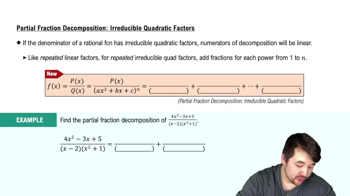7–64. Integration review Evaluate the following integrals.
24. ∫ from 0 to θ of (x⁵⸍² - x¹⸍²) / x³⸍² dx
 Verified step by step guidance
Verified step by step guidance Verified video answer for a similar problem:
Verified video answer for a similar problem:



 5:43m
5:43mMaster Definition of the Definite Integral with a bite sized video explanation from Patrick
Start learning